Unfavourable reports by Lord Wolsey (who was at that stage the Adjutant General) about the Enfield 442 RIC (Royal Irish Constabulary) Revolver in use during the mid-1880’s being heavy and cumbersome as well as negative reports by the Royal Navy prompted the development of a new service revolver for the British Army from Webley & Co. as well as Adams & Co. Trial were conducted during July/August 1886 although none of them met with approval. Enfield was directed to design a new pattern revolver based on the results obtained from the tests. The new Enfield was submitted in February 1887 that was based on a new cartridge design but was also interchangeable with the Adams cartridge. There was a report about a service member being killed as a result of an accidental discharge and during testing it was found that there was a design flaw as the accident was not an isolated occurrence. The Webley revolver idea was revisited and later in 1887 Webley received the first order for a design that would serve in the British military for the next fifty years. The new cartridge had a similar case length (but not interchangeable because of the bullet design) than the 476 Enfield Mk. 3 case but the first cartridges were not approved until July 1891 which meant that the revolvers approved in 1887 had to either use the 450 Adams cartridge or had to be kept in storage until such time as the cartridges became available. The cartridge approved in July 1891 was the “CARTRIDGE SA BALL PISTOL WEBLEY MARK I (ALSO ENFIELD)”. (Erlmeier, Brandt Ref. 460)



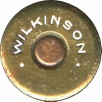
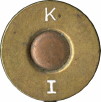
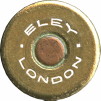
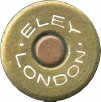
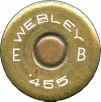
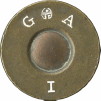 Headstamp by Grenfell & Accles
Headstamp by Grenfell & Accles
With the invention of cordite in 1889 the days of black powder cartridges were numbered and right after the adoption of the 303 Cordite Mk. I in November 1891, the 455 Webley was also changed with the adoption of the “CARTRIDGE SA BALL PISTOL WEBLEY CORDITE MARK I (ALSO ENFIELD)” in September 1894. As can be seen above, the old Powder Mk. 1 cases were secured by neck stabs, whereas the later Cordite Mk. 1 had a neck cannelure that matched one of the bullet cannelures. (see also Erlmeier, Brandt Ref. 456)


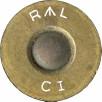
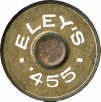
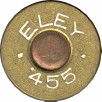
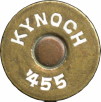
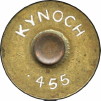
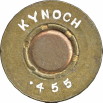


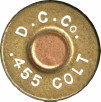
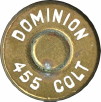
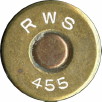
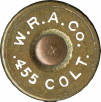
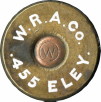

 Last specimen is by OPM in South Africa
Last specimen is by OPM in South Africa
